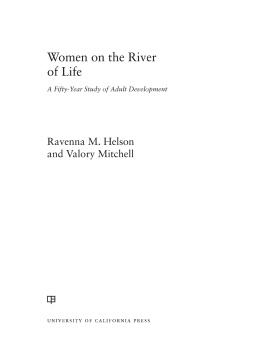Cover photo: Huipil weaver at her loom. Photo courtesy of Katie Mahoney.
All photographs by the author except where otherwise noted.
First published 1990 by Westview Press, Inc.
Published 2019 by Routledge
52 Vanderbilt Avenue, New York, NY 10017
2 Park Square, Milton Park, Abingdon, Oxon OX14 4RN
Routledge is an imprint of the Taylor & Francis Group, an informa business
Copyright 1990 Taylor & Francis
All rights reserved. No part of this book may be reprinted or reproduced or utilised in any form or by any electronic, mechanical, or other means, now known or hereafter invented, including photocopying and recording, or in any information storage or retrieval system, without permission in writing from the publishers.
Notice:
Product or corporate names may be trademarks or registered trademarks, and are used only for identification and explanation without intent to infringe.
Library of Congress Cataloging-in-Publication Data
Ehlers, Tracy Bachrach.
Silent looms: women and production in a Guatemalan town / by
Tracy Bachrach Ehlers.
p. cm. (Westview special studies on Latin America and the
Caribbean)
ISBN 0-8133-7581-9
ISBN 0-8133-1183-7 (pbk.)
1. Women in developmentGuatemalaCase studies. 2. Women
GuatemalaSocial conditionsCase studies. 3. Matriarchy
GuatemalaCase Studies. I. Title. II. Series.
HQ1240.5.G9E34 1990
305.4'2'097281dc19 88-14296
CIP
ISBN 13: 978-0-367-28728-3 (hbk)
In her book, Silent Looms: Women and Production in a Guatemalan Town, Tracy Bachrach Ehlers captures the paradox of gender relations in a society that accords power and authority to men yet leaves the major burden of child care and economic maintenance of the family to women. Most monographs on Maya populations have either ignored women's contributions to the indigenous economy or, when they have included women's work, have ignored the contradiction between patriarchal ideology and observed behavior that is increasingly sharpened by the political and economic transformations taking place.
Ehlers makes these the focus of her study of the household production system. She raises the questions, What roles had Sampedranas played in the developing economy of the town? How did the entry into a modem consumer economy affect female interaction with men? And to what extent did women take advantage of increased economic and social power? During the decade that Ehlers has studied the town of San Pedro Sacatepquez, from the mid-seventies to the present, there has been an extraordinary expansion of commercial activity accompanied by regional transformation and national-level political violence. Within a climate of rapid economic expansion, the differential opportunities for men and women have had unpredictable consequences on the traditional economy and social relations of a peasantry that turned from small plot cultivation and handicrafts to trade and trucking. Although men have greater access to commercial pursuits, some women have overcome obstacles to their participating in development, diversifying their market trade and learning new skills to adapt to the new economy. Yet the majority of the women in the traditional economy have lost the autonomy they had as weavers and traders selling to a local market, and, as a result, marital relations have moved from the balanced equality characteristic of traditional peasantry to the machismo of ladino families.
Ehlers tells this story with style and verve. She begins her book with the saga of Gloria Fuentes, a young woman who, rejecting marriage with the lover who impregnated her, went on to a successful career as an educate. We learn why Gloria made the choice and how the case illustrates the profound contradictions women experience as some move into the modem economy. Whether they choose the anomalous position of Gloria or put up with the philandering and abuse of a macho husband in order to acquire children, they are constantly strategizing to survive amidst dramatic social transformations.
The author absorbs the attention of the reader to such an extent that s/he may not perceive the powerful ethnographic style and method that Ehlers is developing. I would like to call it an ethnography of engagement In the first place, Ehlers enters her ethnographic study not only as a participant observer but thoroughly engaged in the lives of the people. Using this method, she is able to show the links between personal biography and structural context. Through intimate examination of women's lives, she makes penetrating observations that show the personal impact development may have. Ehlers writes, for example, that when Gloria's illegitimate baby died she was able to take advantage of the educational opportunities newly available for rural women in the seventies and start her own career, Ehlers narrates the story of passionate teenagers whose premature marriage resulted in a mature relationship as the at-first miscast parents became a commercial success story in the burgeoning regional economy. We learn of women living in scattered hamlets who were able to make a successful transition to the commercial sale of homemade soap by taking advantage of new roads, while others who once wove traditional huipiles sank into deeper impoverishment when the demand diminished. The distinct patterns of adaptation are forcefully drawn, overcoming both structural determinism and fcile generalization.
The potential and the contradictions of female-managed family businesses in trade, shops, services, and cottage industries is clearly developed in Ehlers' study. Daughters are the main link intergenerationally, yet sons, who are not socialized to help as much as daughters, are the benefittors of surpluses gained by women since they are more likely to go on to higher education. Paradoxically, the more successful these women entrepreneurs are, the more likely they are to turn over the control of money to men. Men, whose enterprises are better capitalized, more mobile, and less occupationally segregated, more often usurp family labor power for their businesses that command higher returns in the market.
The impact of the changing economic relations in San Pedro Sacatepquez is traced in the sexual relations of marital and consensual unions. Ehlers departs from the model of male machismo and female marianismo as a static and symbiotic balance "popularized as a patriarchal fantasy." Rather, she shows how it sanctions more abuse, irresponsibility, and brutalization. Class relations that set distinct patterns for gender roles are explored, both in courtship practices as well as marital life, where the ideal of segregated, privatized domestic life can only be ensured by wealth. Here Ehlers' technique of engaged ethnology gives one an intimate picture of how people proceed to act out the game of sexual power in a time of changing rules. Transient conquests have become parallel marriages characteristic of the dominant ladino population, yet marriage as an institution prevails despite male transgressions.
Ehlers concludes that modernization and development bring with other changes inequality and dependency of women on men. At die same time that some women benefit, because the majority are economically marginalized in the process of expanding market relations, most Sampedranas are deprived of their productive control. We learn all thisthe heavy burden women bear and the strategies they employ to survivethrough intimate portraits of the women of San Pedro. These are prevalent patterns throughout the world and warrant the careful attention of social scientists and development agents.









